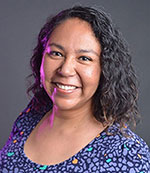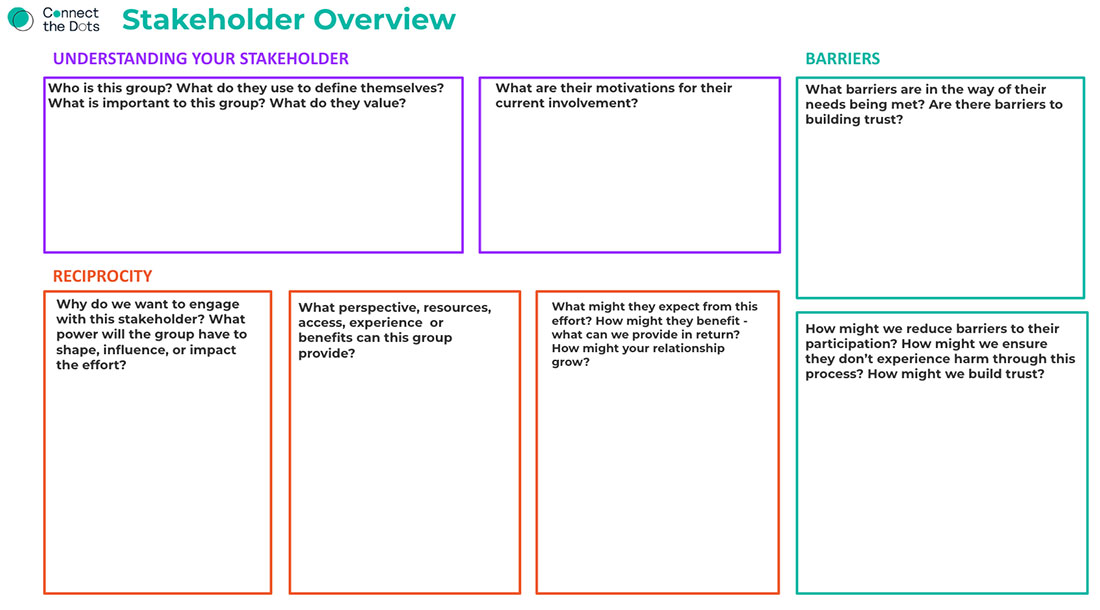02 Jun The Magic of a Phase Zero
 Sylvia Garcia-Garcia is Connect the Dots’ Project Manager of Public Engagement, based in Philadelphia. She is a bicultural multilingual experienced social impact professional, passionate about centering representation and sustainability.
Sylvia Garcia-Garcia is Connect the Dots’ Project Manager of Public Engagement, based in Philadelphia. She is a bicultural multilingual experienced social impact professional, passionate about centering representation and sustainability.
Sylvia holds a Master’s in Strategic Thinking from Tec de Monterrey and has since worked as a consultant and project manager across sectors and countries. Her 15-year career in social impact and collective change informs her work while prioritizing knowledge sharing as key when creating social impact. She works guided by the idea that the future is created today.
“Can’t we just start asking people what they want?”
It’s a natural question among some project leaders when it comes to Public Engagement. The eagerness to get started, the passionate interest to learn more, and tight timelines work together to make it a common question filled with a sense of urgency.
However, there are a couple of things that need to happen between a project kick-off meeting and the day we -as the Public Engagement team- put our feet on the field. Why? Because Public Engagement is a process that -by definition- requires us to work collaboratively with and through neighborhood members, leaders, and groups, as well as with key stakeholders.
Let’s think about the project leads. Generally, multiple stakeholders are part of the client team and each have a voice in decision-making, each one with its set of interests, experiences, and priorities. And that is not wrong -we love the different voices!- but it challenges everyone to be on the same page. That is why we love our On and Off the Table workshops, to settle the goals for engagement and align expectations. This workshop is often the next step after our project kick-off meeting and focuses on pulling out where participant input can realistically feed into the decision-making process, and where it cannot.
Then, think about the neighborhood. Each neighborhood is unique in its story, and there is no better one to tell it than the people that are a part of it. There may be expectations around the topic of interest, and others may be born. And there may be a precedent of public engagement -possibly traumatic or abusive- that we are not aware of. How to learn about all this and more? How can we know what of the many possible engagement methods and approaches will work best? Through spending time in Phase 0: Asking the right people through interviews, focus groups, surveys, public meetings, whatever is the most appropriate.

A Connect the Dots tool for understanding stakeholders as part of Phase 0
—
Asking those questions -of project leads and the neighborhood- allows us to design a tailor-made Public Engagement Plan. Through Phase 0, we will know who we are talking to and how to better communicate with them and engage in the best-fit ways. We will also know what pieces of the decision-making require public input -and what do not. At Connect the Dots, we like to say that engagement moves at the speed of trust; and this is a first critical step to building that.
Having those conversations as part of Phase Zero is not only procedurally consistent, but also humanely responsible, and sustainably aligned. There is no way to do Pubic Engagement without knowing who we are talking to (i.e., who is intended to get engaged), what we want them to share input about (i.e., the goals of engagement), and how we should engage them (i.e., recommended methods by the locals and for the locals).
Once those questions are answered, the Public Engagement Framework and Public Engagement Plan are just around the corner. And we are ready to go!
Connect with Sylvia on LinkedIn >>
